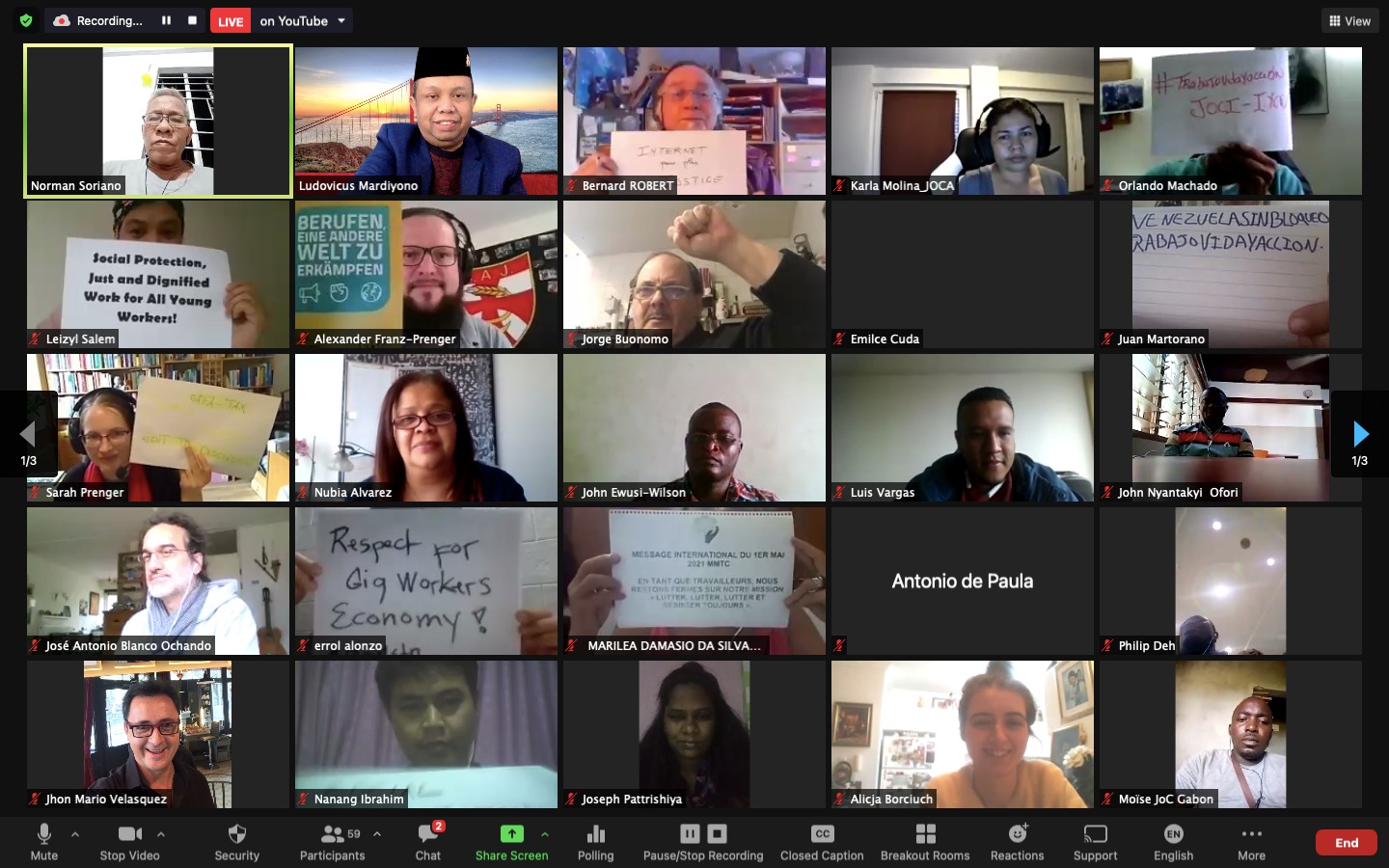
“I was impressed to see that YCW Nicaragua has a plan about their gender action. It is elaborate, with objectives and everything. It made me wonder why we don’t have such a plan in the Walloon YCW.”
This is a statement from Zoe, a fulltimer in the Walloon YCW, telling other French-speaking comrades about her experience in the Spanish-speaking exchange. When describing her action on gender in the Walloon YCW, she presented a national action group giving space to young women and LGBTQI to act together.
Just like her, other delegates from Gabon, Haiti, Congo Brazzaville, Germany, Ghana, Peru, Indonesia, Wallonia (Belgium) and Nicaragua accepted the IYCW gender commission’s invitation to meet in different spaces organized according to time zones and languages in order to exchange about their actions related to gender. When sharing experiences about gender-based violence and discrimination, it became obvious that existing inequalities increased even more because of the current global pandemic. As Rony from Indonesia reported:
“It is a real challenge that many women in Indonesia do not have any health insurance. This is always bad, but it is a real challenge in such a health crisis. Also, many health workers, who are the front-liners right now in our country, are females.”




 English
English  Español
Español  Français
Français